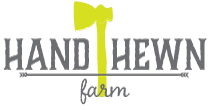Ever wondered where bacon comes from? Or what’s actually in your sausage? Adam and Jenny Roberts of Mt. Vernon wanted to know those same things, so they decided to shoulder the responsibility of finding out where their food comes from and participating in a true nose-to-tail butchering experience on the farm where that animal lived its happy life.
There are many different ways to transform this carcass into familiar and exotic cuts or uses, but generally speaking the first step is to separate it into four “primal” cuts.
Taking your food this seriously can be a lot of work. But this family came prepared, and with a little instruction and guidance jumped right in!
It is hard to overstate the quality of this pork. Heritage breed pigs that spend their lives munching on pasture and foraging in stands of hickories and oak trees to round out their daily ration of non-genetically modified feed is hard to come by. All the flavor found in the intramuscular fat (marbling) is what dominates the marketing in the steak world. But pigs that live their lives on a concrete slab don’t have that marbling. That’s why you never hear about it, or taste it!

The small amount of “waste” is actually used to feed the farm dog that helps manage predators on the farm.
There were many things that Adam and Jenny learned that day with us at Hand Hewn Farm. But the thing we enjoy teaching the most is empowerment. With the right context and tools, you really can take control of your food. After all of the obvious cuts of pork belly and boneless chops, and ham roasts and hunks of shoulder for pulled pork, and baby back ribs and tenderloin, we explored all of the possibilities for chicharrones, and smoked hocks, and bone broth and pounds and pounds of sausage. In fact, of the 172 lbs that we started with that morning, only three lbs went into the tub for the farm dog!













How much does it cost to have a training? Are you able to train us how to butcher sheep?